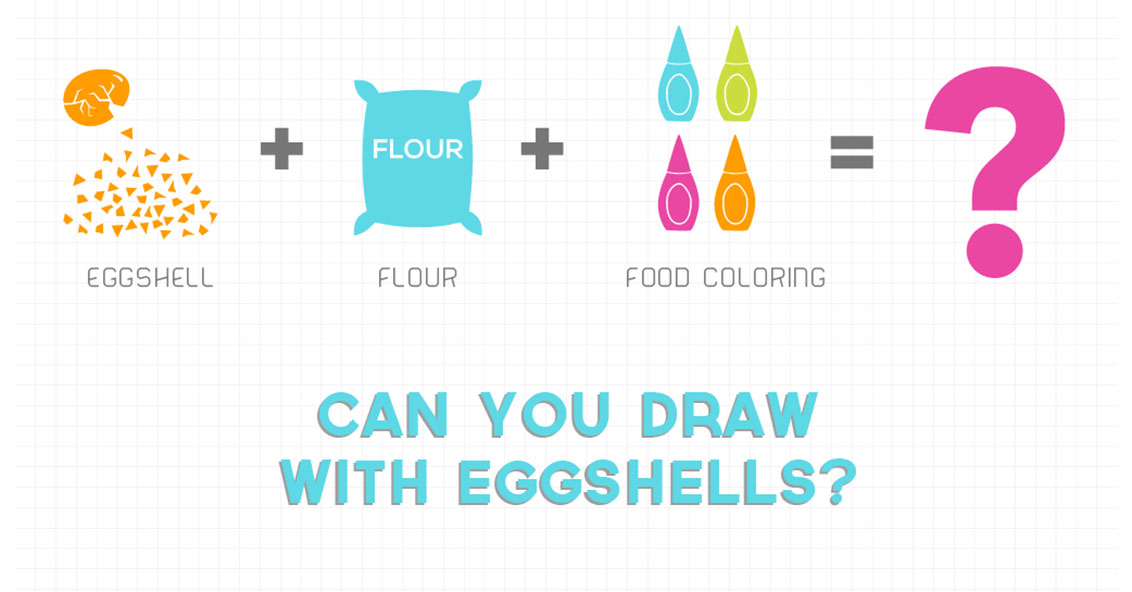
Did you make omelettes, scrambled eggs, or maybe a frittata for breakfast? Don’t throw away those eggshells! Science Educator Becky Wolfe and her daughter MJ show you how you can use them for this Real Science DIY experiment, courtesy of Almost Unschoolers.
Materials:
- 4-5 Eggshells
- Hot water
- Flour
- Food coloring
- Mixing bowl
- Mixing spoon
- Paper towels (or paper napkins)
Process:
- Wash and dry the eggshells. If you can, remove the thin membrane from inside the egg shells.
- Crush the egg shells as finely as you can. A food processor works, but you'll get the finest powder if you use a mortar and pestle or an old coffee grinder.
- Mix one teaspoon of flour and one teaspoon of hot water in a small bowl. Mix it until it's a paste.
- Add one tablespoon of egg shell powder to your paste. Add a few drops of egg coloring if you would like.
- Mix until everything is combined. If you can't press the mixture into a log shape, add a bit more water.
- Shape the ggshell mixture into a log shape.
- Use one of these two methods to dry your chalk:
- Wrap the log into a piece of paper towel and let it sit 3–5 days. If the chalk starts to crumble when you write with it, let the chalk sit for another day or two.
- For a faster method, place the chalk on a small baking pan lined with parchment paper. Bake the chalk on a very low setting—150°F—for 90 minutes. Let the chalk sit for 24 hours to finish drying.
- Take your chalk outside and start drawing! Note: to prevent scratches, do not use this chalk on a chalkboard.
What's going on?
Did your eggshell sidewalk chalk allow you to draw beautiful sidewalk pictures just like the chalk that can be bought in a store?
Store-bought sidewalk chalk is made from a combination of calcium carbonate, gypsum, silica, phosphorus, iron, alumina, phosphorus, sulfur, manganese, copper, titanium, sodium oxide, fluorine, strontium and arsenic. Its main ingredient, however, is calcium carbonate – a form of limestone. Calcium carbonate (CaCO3) is the chemical that lets us draw on the sidewalk with a piece of chalk.
Do you know what else contains calcium carbonate? Eggshells! This makes them a great alternative to store-bought chalk.
Share your colorful creations with us by using the hashtag #TCMatHome on social media!

 (
(











